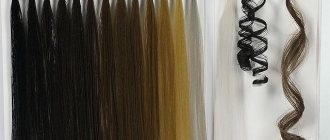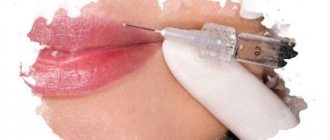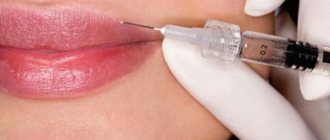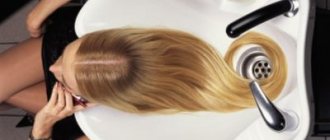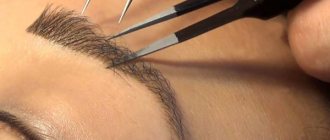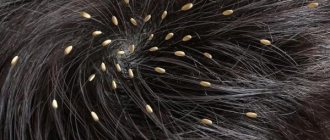Do you want to regain lost hair without resorting to serious intervention? Minimally invasive procedures solve this problem! Read more about the procedures...
Special conditions for non-residents Patients from other regions can receive additional bonuses: compensation for the cost of tickets, accommodation, etc. Read more
With the help of hair follicle transplantation, hair restoration is possible in various forms of alopecia. View readings...
Some clinics offer hair follicle transplantation, which allows you to restore hair in its natural form - with natural thickness and angle, avoiding scars and scars on the head. To learn more…
Current prices for hair follicle transplantation with minimal trauma. Find out prices...
Hair follicle transplantation is designed to help restore hair at almost any age, for both men and women. Are there any possible contraindications?
Interest-free installments for 6 and 12 months for hair follicle transplantation. View terms and conditions...
Hair transplantation in some cases may be the only possible way to restore hair. It uses hair follicles from those areas of the head that remain healthy throughout a person’s life. Once you decide to undergo hair transplantation, it is very important to go to a reputable clinic.
Modern hair transplantation is characterized by low trauma and a short recovery period, after which the transplanted hair looks natural. The hair transplant method that is most suitable for you can only be determined by a qualified specialist.
Who even came up with hair transplants?
Japanese surgeon Suji Okuda, a doctor in the Kwantung Army, became interested in the topic in the 1930s. In 1939, his work “Clinical and Experimental Hair Transplantation” was published. Before this, hair was not transplanted; wigs were worn.
Okuda performed more than 200 surgeries on military volunteers. Hair transplants covered scars and burns received during the war.
For hair transplantation, Okuda used a puncher. Miniature, of course - a circular metal trephine with a diameter of 4 mm. Spoiler alert: not much has changed since then.
Grafts for transplantation
Using a puncher, the surgeon drilled out grafts (pieces of skin with hair follicles) from the back of the head, and then inserted them into the right places. But things didn’t work out - politics got in the way. Japan supported Germany in World War II. After Hitler lost the war, the country found itself on the outskirts of civilization.
In the 60s, scientists began to extract one hair at a time to make the transplant result more natural. And only about 15 years ago, surgeons realized that it was more effective to transplant natural microtufts of hair.
Such bundles have a common blood supply channel and a common sebaceous gland. The process is complex and time-consuming, but the result is impressive.
What is FUE hair transplant? How to overcome baldness?
Baldness is a common problem that, according to statistics, affects more than 70% of men after 35 years of age.
Often, trichologists identify 2 main factors that contribute to the development of alopecia: genetic and hormonal. With the active influence of hormones on the hair follicle, the latter weakens and loses the ability for further reproduction.
Hair growth thus stops. With a hereditary factor, baldness after 35 years progresses every year. However, modern medicine offers effective methods of hair extensions that help delay the process of baldness.
What methods are used now?
FUE transplant: before and after
All techniques are divided into two groups – seamless ( FUE ) and suture ( FUT, Strip ). Theoretically, there are other experimental methods, but ISHRS (International Society of Hair Restoration Surgery) only recognizes these two.
Both groups have their advantages and disadvantages. The number of FUE and FUT/Strip operations is approximately the same.
Recently, HFE and DHI - improved options for seamless transplantation. The grafts are smaller and the scars are not so visible.
A common drawback of all methods is that before removing the grafts, the hair in this area is shaved off. But if you are already used to shaving to hide your baldness, this is not a problem.
You can do without shaving only if you need to transplant a few follicles. For example, to disguise a scar or make new eyebrows.
If you need to transplant a lot of hair, but you can’t shave, pieces of hair are cut off. But this is not so convenient for the doctor; the effectiveness of the procedure decreases.
The operation itself is not difficult for the patient. You can watch TV, read a book or play. If necessary, you can stop at any time to walk or eat.
Seamless transplant
Seamless hair transplant process
FUE is the extraction (extraction) of follicular units. Groups of 1-4 follicles are called grafts.
Hair transplantation is carried out in three stages:
1. Grafts are drilled out of the skin under local anesthesia with a special tool – a punch. This is a metal handle with a beveled tube with a diameter of 0.5-0.9 mm inside.
2. Channels are made in the bald area. These are shallow cuts and will not need to be sutured.
3. The grafts are placed into the canals using tweezers in a checkerboard pattern. This way it turns out more natural - so that there is no “doll effect”.
How dolls' hair is sewn in: in large bunches along clear lines. Looks unaesthetic
Grafts are obtained manually or mechanically. You can manually cut up to 1.5 thousand grafts (yes, that’s not much!). In total, a person has 90-200 thousand hairs .
Grafts before transplantation
Need more? We'll have to take a microturbine and extract grafts with it. You can extract twice as many follicles.
It’s easier with a turbine - the doctor makes fewer movements and doesn’t get so tired. But the surgeon needs to feel how deep to take the grafts and how quickly.
The turbine rotates at speeds of up to 1 thousand revolutions per minute. The procedure requires serious experience and extreme care.
Advantages of the seamless method:
▪ Almost painless. ▪ Less traumatic. ▪ Punch marks will not be visible even on a shaved head.
Minuses:
▪ Suitable for small bald areas only. ▪ The procedure can last up to 8 hours. Not everyone can handle it. ▪ Up to 6% of follicles are damaged and lost.
Suture transplant
Suture hair transplant scheme
If the baldness is severe, you cannot do without stitches. The doctor will have to take a whole flap of skin and cut it into grafts. There are three main stages:
1. Strips of skin are cut out with a scalpel from the back of the head and divided into grafts.
2. The surgeon closes the edges of the wounds with sutures so that the scars are not so noticeable.
3. After this, the grafts are transplanted to the desired location manually or using an implanter. The surgeon takes into account the direction of hair growth to achieve naturalness.
Typically, the surgeon directly performs the transplantation, and assistants (up to eight people!) separate fresh grafts from the flaps.
Advantages of the suture method:
▪ Up to 5 thousand grafts – up to 12 thousand follicles – can be transplanted at a time. ▪ The operation takes 3-4 hours. ▪ Grafts are easier to remove. ▪ Rejection rate – less than 3%. ▪ Lower price.
Minuses:
▪ Scars from cut flaps of skin. ▪ Headaches due to damaged nerve endings. ▪ Inability to wear short hair.
Obvious advantages of the seamless method
Main advantages.
- No traces of scars from punctures are visible on the donor scalp; only small dots remain, like on the peel of an orange.
- The absence of surgical intervention with a scalpel and wounds on the skin speeds up the healing process.
- After the operation, the possibility of using the donor site for re-transplantation cannot be ruled out.
- The occipital part of the hair does not deteriorate aesthetically, the hair looks the same as before the operation.
- Grafts from other parts of the body, when transplanted to the scalp, successfully take root.
Grafts successfully take root using the seamless transplantation method - The ability to accurately calculate the number of grafts of the desired structure and determine the composition of the follicles.
- When micropunching material with a needle from the back of the head, minimal injuries are caused to it.
- There is no blood loss, only droplets are released.
- The procedure is painless, there are no complications.
- Thanks to the gentle excavation, the follicles are completely engrafted.
- The rehabilitation period does not last long, only a few days.
- The transplanted hair quickly adapts and looks natural due to its uniform distribution throughout the transplantation area.
It is possible to achieve rapid adaptation of transplanted hair
What kind of hair is transplanted?
Only your own hair is transplanted. Hair donation does not exist - foreign follicles do not take root. Theoretically, follicles can only be transplanted from one identical twin to another.
Where do hair transplants come from:
From the head
In 1952, plastic surgeon Norman Orentreich introduced the concept of donor dominance. He proved that hair from the temples and back of the head is the most resistant genetically.
They are resistant to male hormones, the imbalance of which causes androgenetic alopecia. This is what causes 90% of baldness cases.
The hair on the back of the head grows thickly, so that up to 50% of the follicles can be extracted without noticeable marks. This is if you choose a seamless method and drill individual grafts.
If you take flaps, the scars will remain. But often this is the lesser of two evils.
From the body
If there are few follicles on the back of the head, hairs are taken from the body. But they are sensitive to male hormones, and after transplantation they may fall out within 2-3 years.
Chest hair is sometimes transplanted into a beard or eyebrows. On the head - from the beard, they will grow longer than from other areas of the body.
If it is no longer possible to take the required number of follicles from the beard for transplantation onto the head (for example, during a repeat procedure), hair is taken from the groin area. Then the arms, legs, and chest go into action. But only if there are no other options.
This type of hair will not grow too long. Therefore, they are used either to fill in the crown and back of the head, or to create the front hairline.
Is it possible to transplant artificial hair?
Artificial hair next to real
hair. Artificial hair transplantation is performed in exceptional cases. In the USA, such procedures were banned in 1983 due to the high risks - from the development of infections to complete hair loss.
Artificial hair for transplantation is produced, for example, by the Italian Medicap (polymer single hair Biofibre and triple Medicap High Density) and the Japanese Nido. At the end of the hairs there are loops or hooks in a keratin sheath that prevent them from falling out of the skin.
But the effectiveness of such a procedure is much lower than if you work with living hair. The body can reject artificial hair.
Artificial hair cannot be dyed or curled, or used with a curling iron or iron. If you cut them short, it's gone forever. You also need to comb your hair very carefully.
Seamless hair transplant using the FUE method: what are the contraindications to the procedure?
Hair transplantation using the sutureless method is contraindicated for patients in the following cases:
- a history of diabetes mellitus in the decompensation phase;
- incidence of cancer at any stage;
- the presence of infectious diseases in the acute stage (including sexually transmitted diseases);
- there is a factor that disrupts the blood clotting mechanism;
- period of pregnancy and lactation (breastfeeding);
- arterial hypertension;
- chronic skin diseases;
- the presence of installed implants in the heart muscle;
- allergic reaction to local anesthetics;
- deep state of depression or mental disorders.
- insufficient amount of hair in the donor area for extraction and subsequent transplantation.
In addition, doctors do not recommend performing hair transplantation by any method at too young or old ages. For example, if the patient is about twenty years old, then the result of the operation may be overshadowed in the future due to the unformed pattern of alopecia. And in older people, wound healing naturally occurs more slowly than at an earlier age. Thus, the risk of rejection of transplanted donor hair increases many times over.
In any case, if the patient is concerned about the problem of baldness, it is necessary to make an appointment with a trichologist and plastic surgeon. Which will select an individual solution plan.
Hair transplant can be done anywhere
Sideburns, mustaches, eyebrows, breasts - the doctor doesn’t care where to transplant the follicles. So if you want a shaved skull and a beard like a lumberjack, this is not a problem.
And when the fashion changes, replant it back. Joke.
Women are increasingly transplanting eyebrow hair (hello, Cara Delevingne!). The difficulty is that the hairs here grow at a large angle, so only an experienced doctor can do the job efficiently.
The procedure lasts 2-3 hours. Taking care of your new eyebrows is easy, but you will have to trim the hairs regularly.
Transplantation techniques
There are three transplantation techniques.
FU T ( strip ) , developed back in the thirties, involves surgical removal of hair using a scalpel under anesthesia.
- A strip of donor skin with follicles up to 25 cm long and up to 3 cm wide is cut out at the back of the head.
- The strip is cut into strips 1-2 mm wide, which are implanted on the bald part of the head using small incisions with a scalpel.
After surgery, the incisions made on the skin leave multiple scars; the scars take a long time to heal.
Important ! It will not be possible to achieve a natural hairstyle and the angle of each hair using this method.
Such operations are considered outdated, ineffective and rarely used in practice.
FUT Method (strip)
More progressive is the surgical FUE - seamless transplantation by machine.
- A group of up to 5 follicles located nearby is removed using a micropunch in the form of a microtube, and they are used for transplantation.
- This allows the grafts (hair follicles) to be isolated in groups by extracting a microscopic tuft of skin from the back of the head.
- The grafts themselves become smaller in size; incisions are made using a scalpel, closely spaced one after another, and donor follicles are implanted into them.
Important ! The disadvantage is that traces of a machine puncture remain on the back of the head, and small scars from cuts are visible at the graft installation site.
FUE technique
Minimally invasive HFE is a sutureless technique performed manually by surgeons.
- Puncture points are made on the scalp, and grafts of the appropriate size prepared for transplantation are placed in them, which makes it possible to increase the survival rate of follicles many times, practically without the formation of collagen sutures.
- The transplantation is performed under local anesthesia. The patient, sitting in a chair, endures the procedure without any pain.
- A surgical scalpel is not used with this method; follicles are removed using a micropunch with a needle to puncture only a millimeter deep. At the end of the operation, the density of hair on the back of the head does not look thinning, and no traces of punctures are visible either.
- An implant in the shape of a tube with a small diameter is used to transfer the graft and introduce a donor bundle of follicles to a depth of 1 mm. The frequency of punctures and the natural slope of the hair are strictly regulated.
- The operation, depending on the volume, can last from two hours or more, and is carried out with breaks for sessions.
- The punctures leave virtually no traces and heal within three days; the follicle survival rate is high. Externally, no traces of intervention are visible at all.
Important ! A very effective method for restoring hair on the mustache, eyebrows and other places on the body.
Minimally invasive HFE technique
How much hair will survive
On average, up to 95% of follicles survive. But everything very much depends on the qualifications of the doctor and the patient’s condition.
After a couple of weeks, some of the transplanted hair will fall out. But this is a natural update. The main thing is that the follicles will remain in place.
In general, a 100% guarantee on all follicles is a myth. Firstly, 3-6% of follicles will be lost before transplantation. Secondly, no one will count the transplanted hairs.
With artificial hair everything is sadder. About 10-20% of hairs fall out every year. You will have to adjust your hairstyle every 2-4 years.
What to do after the procedure
One day after hair transplantation
Even after suture hair transplantation, you can return to work the next day. After three days you will be allowed to wash your hair, after a week you will be allowed to go to the gym or do other physical activity.
The traces of seamless transplantation disappear faster. But still, in the first days you should not overexert yourself, go out in the sun without a cap or visit the sauna.
Before and after trichopigmentation
If scars bother you, you can do tricopigmentation - tattoo the missing follicles. It doesn't hurt too much.
Hair from new follicles will begin to grow within two months. At first they will be curly and unruly, but after a few haircuts this will go away.
The final result is assessed one year after the procedure. If the hair is not thick enough (normally 80-120 hairs grow per 1 square cm, up to 50 are transplanted), the procedure can be repeated.
Reviews
Many years of application of transplantation methods in our country have helped a large number of people restore lost hair and have a beautiful beard or mustache. There are many reviews on the Internet and on clinic websites about the results of transplantation.
Mostly positive aspects are described. Clients are satisfied with the transactions performed. They note how much their new hairstyle has transformed them; they feel more attractive and less self-conscious. They gained confidence in communicating with women and others. There are many rave reviews from owners of a luxurious mustache or a respectable beard. Women are especially pleased with their transformation, because for them, hair loss and baldness are a disaster. Years later, for many former patients, the results of past operations have remained virtually unchanged.
Many reviews show only positive aspects
They write about the transplantation methods themselves that they were afraid in vain and put off going to the clinic for a long time. The procedure for hair extensions using the latest technologies using, for example, the HFE method turned out to be completely painless and takes little time - you can do it in just a few hours.
No need to worry about the procedure
Here are some examples of positive reviews.
Sergey, Syzran
“I didn’t expect it, but the transplant was absolutely painless. There was no blood on the head. Now there are no visible scars or scars left. At my request, they lowered the hairline above the forehead. I feel simply handsome. Of course, my self-confidence has become much greater. I hope that now I won’t have problems with my hair.”
Pavel, Izhevsk
“On the advice of a friend, I decided to have a hair transplant on my bald spot and I don’t regret it. He turned out to be right. During the operation I did not feel any pain, everything went quickly. Now I feel more confident, and my wife liked it too. I advise all men with similar problems not to postpone surgery, as it really improves life greatly. It may not be a small amount to pay, but the result is definitely worth it.”
People like the procedure
There are practically few negative reviews of the work of leading clinics. As a rule, people in such reviews say that the price of transplant services is very high and is unaffordable for them.
Why does everyone go to Turkey for new hair?
There are more clinics in Turkey and prices are lower. In Istanbul alone there are several dozen hair transplant centers.
Many of these centers have been operating for 20 years. Up to a dozen transplants are made per day in the center of the middle arm. Up to 60 thousand people come for the procedure annually .
But there are no queues. You can come any day, having previously called the clinic, and leave with new hair. At the same time, relax and see the sights.
Finally, many Turkish clinics include in the cost of the procedure several days of accommodation in a 4-5* hotel, transfers from the airport, tests, medications, skincare products, etc.
How much does it cost
In the Russian Federation, the average price for a hair transplant on the head is 2 dollars per graft for the first thousand grafts and 1 dollar for all subsequent ones. Eyebrows, beards and mustaches are more expensive – up to 3-4 dollars per graft. But here the area is smaller.
Diagnostics, ward, medications - everything is paid separately. As a result, a round sum accumulates - from 3 thousand dollars . And in Europe and the USA it costs 10-20 thousand dollars.
In Turkey – 1.5-2 times cheaper. Turnkey hair can be done for 1.5-2 thousand dollars . This includes accommodation, meals, etc.
Synthetic hair will cost more. One hair (not a graft of 1-4 follicles) costs 2.5-3 dollars. Procedure for 1.5 thousand hairs – up to 4.5 thousand dollars . And in 2-4 years it will have to be repeated, albeit on a smaller scale.
What else do you need to know?
In order to compete with each other, some Turkish clinics are forced to save on specialists. As a result, the patient is advised by an experienced doctor, and the transplant is performed by nurses. The doctor intervenes only as a last resort.
There is also a black market for hair transplants. These are illegal clinics that lure in with beautiful websites and low prices. But in the end, at best, you will have to repeat the procedure. At worst, they can cause blood poisoning.
To be sure of the result, you need to contact a clinic that has membership in ISHRS. This is the International Society of Hair Restoration Surgery, a world-class association.
Why choose the MED CITY clinic?
1. Effective techniques.
Plastic surgeons at MED CITY perform hair transplantation using the most effective method, after completing training and internship in EU countries.
2. Compliance with all hygiene standards.
All consultations and interventions are carried out in compliance with the sanitary and hygienic requirements of the Ministry of Health of Ukraine. Disposable instruments and consumables are used.
3. High-quality pain relief.
Support from an anesthesiologist during hair transplantation.
4. Privacy
We observe the principle of strict anonymity for all patients visiting our clinic.
Make an appointment
Total
Seamless transplantation (FUE, HFE, DHI) is less traumatic. Up to 1.5 thousand grafts can be transplanted at a time. The procedure lasts 8 hours. There will be no scars after it. Suitable for slight baldness. Rehabilitation takes 2-3 days.
Suture transfer (FUT, Strip) is when flaps of skin with hairs are cut out and then the edges of the wounds are sutured, leaving strips of scars. Up to 5 thousand grafts are transplanted at a time, the procedure takes 3-4 hours. Will help hide severe baldness. Rehabilitation lasts up to a week.
with artificial hair . It's expensive ($4.5 thousand). After 2-4 years, the transplant will have to be repeated, because the artificial hairs fall out more quickly. You will have to forget about frequent haircuts - artificial hair does not grow. Rehabilitation – 2-3 days.
Preparing for transplant
Preparation is very important for future results; this stage will allow you to choose the appropriate type of transplant, eliminate contraindications, and provide a good basis for manipulation. Since implantation is used only as a last resort, the patient will first have to undergo medication treatment. For 5-6 months, medications are prescribed that help eliminate the cause of baldness.
Reviews show that such therapy sometimes completely eliminates the need for surgery.
If it is still needed, the patient is prepared for the upcoming event:
- 2-3 weeks in advance, an examination and tests are prescribed, a consultation with a surgeon, endocrinologist;
- if artificial implants are implanted, a test is performed: the patient is implanted with up to a hundred biosynthetic hairs and the body’s reaction is observed (if the “donors” have taken root normally within 3-4 weeks, a full transplant is prescribed);
- 5-7 days before, alcohol, smoking and drugs that reduce blood clotting are contraindicated;
- On the eve of the procedure, the area from which the material will be taken is cut short.
Emotional preparation is also important; the patient must be calm and confident in the doctor’s qualifications. Therefore, before coming for the procedure, it is worth finding out customer reviews about the clinic, the length of service of the staff, and the status of the institution. You need to ask the doctor about what method the follicles will be transferred, what the recovery period is, and whether there are any risks or complications. It is also worth clarifying how many sessions are needed for a good result. It is possible that the doctor will not be able to fully perform the entire range of work in one procedure.
Bonus: an example of transplantation in action
The founder of VKontakte and Telegram, Pavel Durov, suffered from baldness at the beginning of his career:
And when he made money on his projects, he began to look completely different. Compare:
It not only added thickness, but also changed the hairline - got rid of bald spots.
Elon Musk also went through this procedure. The company often jokes that the best remedy for combating baldness is $2-3 billion.
The hair of journalist and TV presenter Sergei Brilev has also changed a lot. Before:
And after:
( 40 votes, overall rating: 4.80 out of 5)
